Janet Adenike Adebayo, (b. 1997) based in Lagos, is a “confessional” artist, who utilises her artwork to convey intimate moments and unveil profound truths. Adebayo’s acrylic and mixed media on canvas pieces are recognized for their distinctive “mosaic skin” tones and exaggerated features, delving into themes of self-discovery and consciousness. Her impactful presence is felt through participation in exhibitions such as Transtemporal Travel (Nomadic Gallery, 2023), Identity (1952 Africa, 2022), Spectrum (Dica Art Gallery, 2022), Contemplation (Yenwa Gallery, 2022), and the online solo show The Fragility of Humanity (Formefemineart, 2023). Adebayo continues to make a lasting impression on the contemporary African art scene.
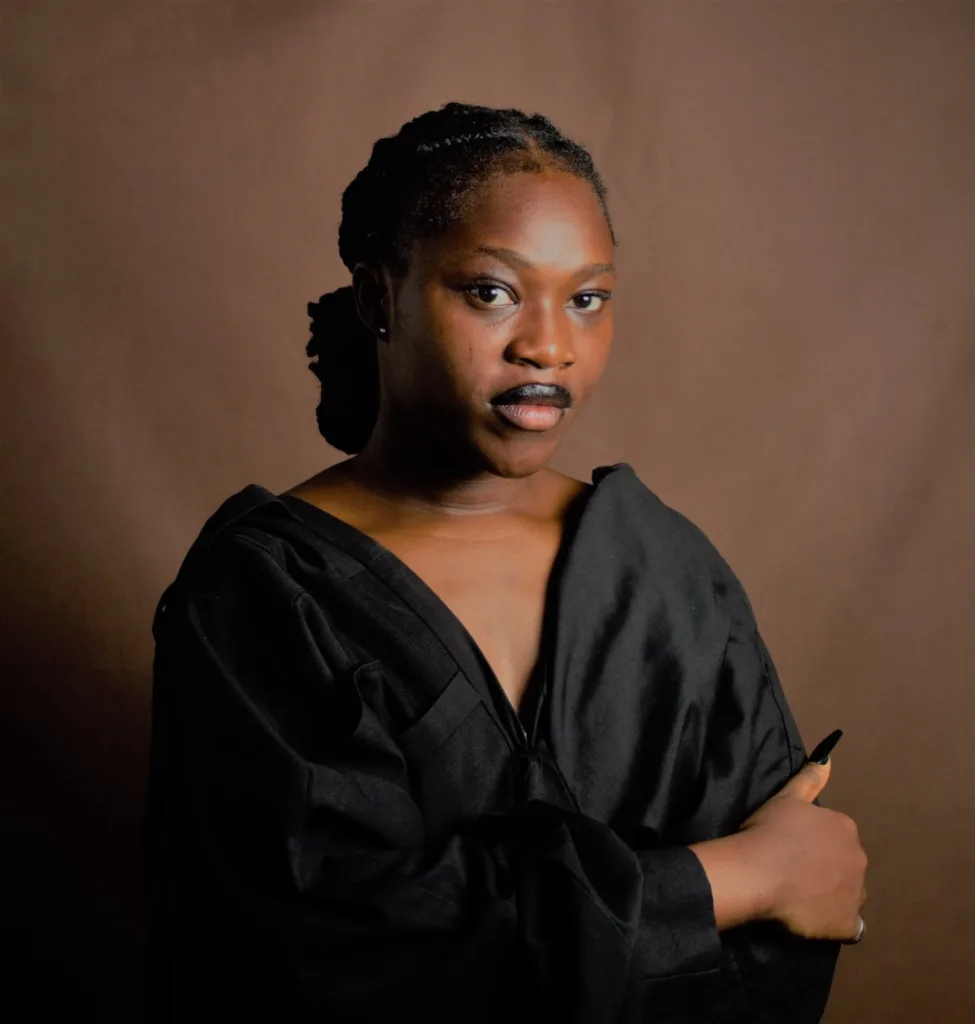
DC: Congratulations on your under30CEO award! What exciting plans do you have in store this year?
J.A: Thank you for congratulating me. First, I’m creating a few pieces of work for an apex show in June or July. I’ll be learning and documenting how to create wooden dowels for my scroll works. I want to create enough smaller pieces of work this year. With the support of God, I want to recruit a studio assistant for a short period between February and March so that I can stay active and collaborate with someone in the studio.

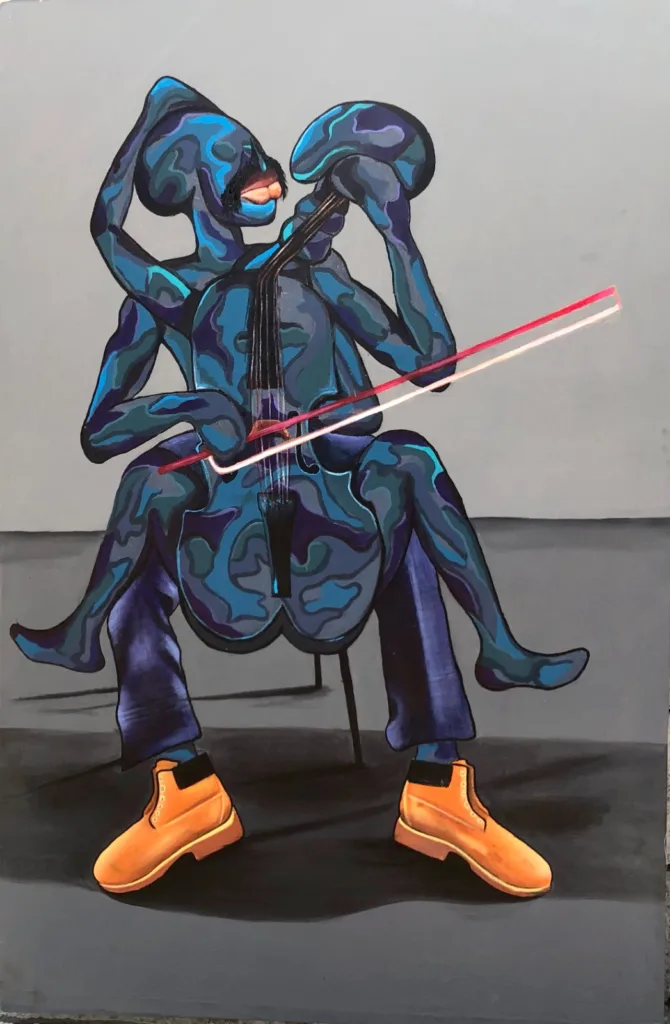

DC: Your scroll works have been a unique, eye-catching feature in your recent works. Would you like to share the inspiration behind incorporating that into your art?
J.A: It all started with working on an idea with Mercy, the curator at Nomadic Gallery. With the theme “Transtemporal Travel,” I decided to take people back in time to explore the nature of family, headship, and community, focusing on my own family. After the scroll work, Nomadic Gallery commissioned me to create more works for marketing because of the excitement they generated. My dad creates these wooden dowels. So this year, I’ll be learning from him so we can create the wood together or I’ll commission him to support the workload.
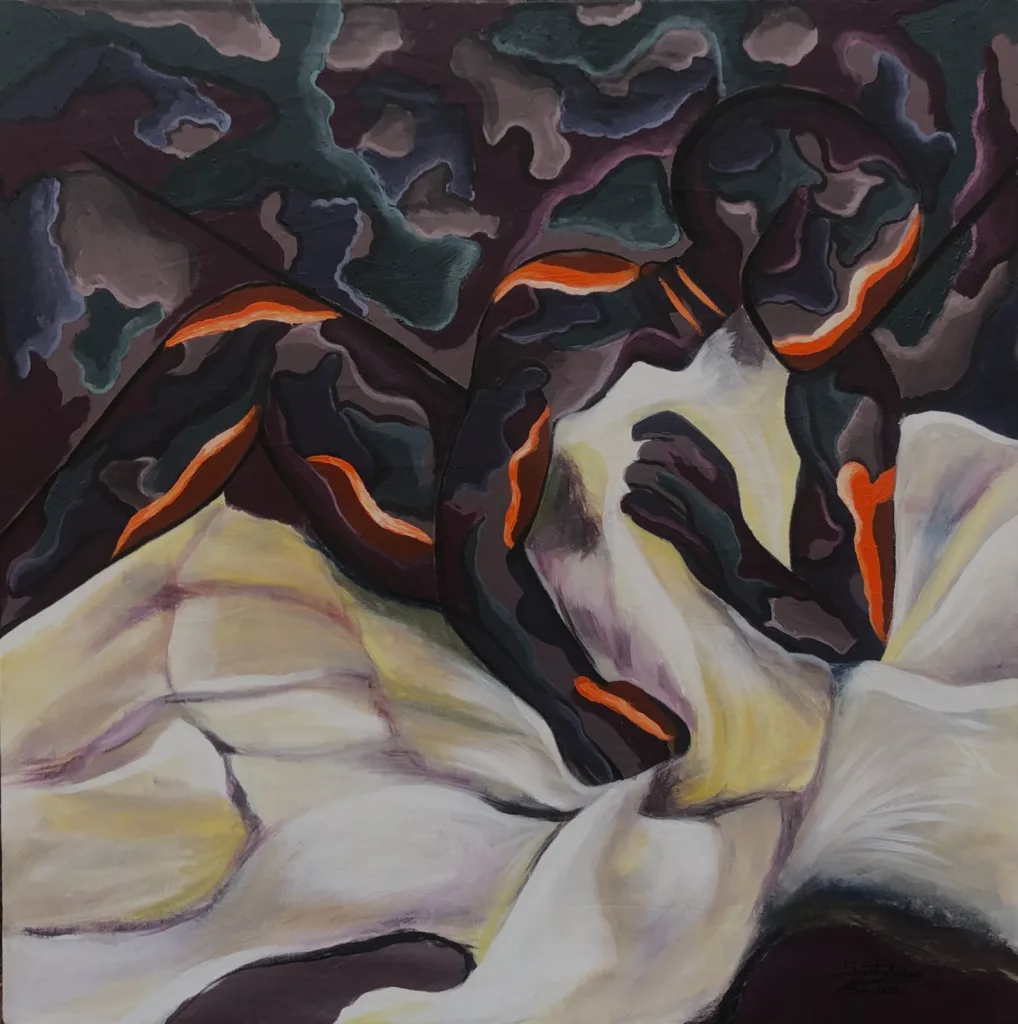
Medium: Acrylic on Canvas
Dimension: 36/36inches
Year: 2023


DC: Would you say collaboration has had a major influence on your growth as an artist?
J.A: Yes, good collaboration has had a great influence on my growth as an artist. I’m not supposed to be left to do things without people meddling in my affairs. In fact, I want it. Art, or my art career, has gone beyond painting for me. Anything I do now is a by-product of people I’ve met, things I’ve eaten, experiences, and so on. This is why collaboration is a major concern—emphasis on good collaboration.

DC: Can you describe your art in three words?
J.A: Abstracted, figurative, expressionism/energetic.
DC: Where do you find your inspiration?
J.A: I love growth. If nothing is happening, I create something out of rest. I start things, I bootstrap. If there’s no show for me, I create one. I also associate myself with an active community and active friends. All of these are sources of inspiration.
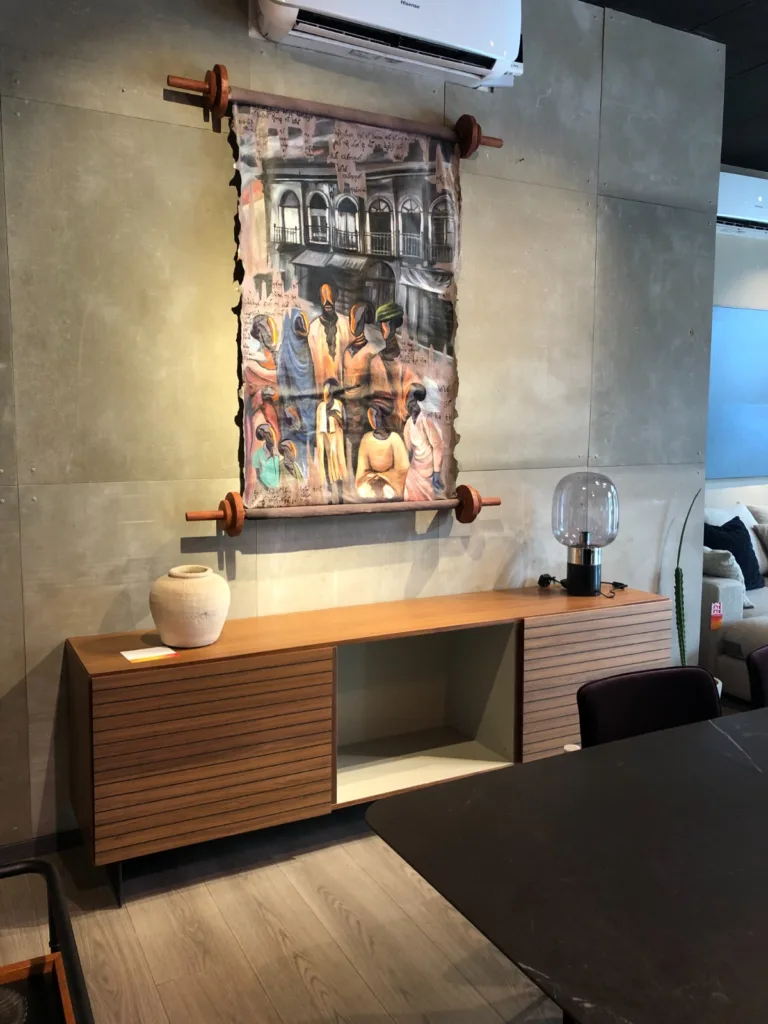


DC: Have you ever been your own muse?
J.A: I am my own muse. I’m a confessional artist, which requires a genuine understanding of who I am before sharing with people. Out of 100% of using muse, I cover 70% of it, while using others as muse is 30%.


DC: They say the greatest art was created by the saddest people, and there is this common belief that depression fuels creativity, especially in the art space. Do you believe this or do you think art in itself is a form of healing?
J.A: They should be ashamed to say that. Should an artist be miserable to get the best of them? The greatest art I created so far was when I never had a cause to listen to anybody. I created them when no one was watching, I did a lot of things that were of no concern to anybody. I danced freely, spoke freely, laughed freely, healthy gossiping, and played till I got tired. Every single thing I did between the ages of 7-15, I enjoyed. Now you have to be miserable to create art. That’s sad. That doesn’t represent me.
After identifying that this is what the community wants, I had to call the young girl in me once again. I’ll set myself up for learning forever. Depression doesn’t fuel creativity. All the art I created when I was depressed were the works I wish I could sell off and make money ASAP because I am depressed and I could die anytime. Just give me my money and let me go. All the works I call art are the things I did without expecting anything other than reactions and questions. Perhaps they want to say storytelling. Storytelling of one’s life is a different thing entirely, and we all know sad stories sell.

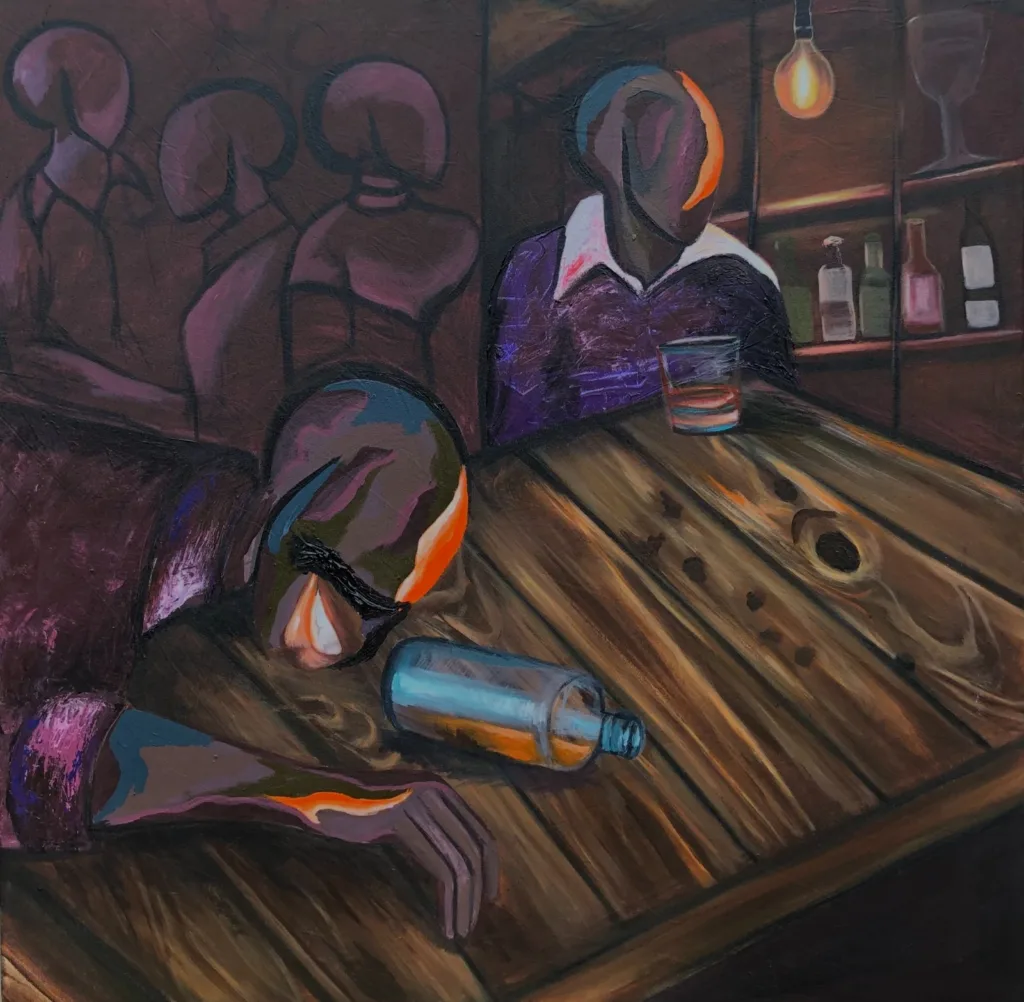

DC: So you think it’s important for artists to create from a place of healing?
J.A: Yes. I think so.
DC: What do you think people look out for most when they attend your exhibitions?
J.A: I notice they want to see my growth. People want to see new things. People want to watch me interact with others too, I noticed. They want to see how I’m responding to the excitement from others. Some groups of people want to record the sales so far. Some want to nurture me at a distance.

DC: Could you share with us your journey as a creative, especially lessons you have learned from your growth in the last year?
J.A: So far, I’m understanding that I’ll have to do this art for life, and to survive in this space, it has to be slow and steady in my practice. It’s going to be a lifetime of cross-shared knowledge. I notice I can be empty if I don’t create time for other things. I have to go out into the world and experience it. Read often, watch movies, or even act. Listen to podcasts. Attend dance classes. Eat a variety of food. Then come back to discipline myself.
This has helped my career so far. If not, I will be creating a piece of art empty and one with no grounded experience. My journey as a creative started as a portrait painter in 2015, where I was tutored for a few months during my IT as a food technology student. I went back to school to make plenty more commissions for people. I got tired of doing the same thing over and over, and I started visiting other artists in their studios to see their works. The works of Awodiya Toluwani, Oladotun Abiola, Akintobi Akintayo, and Yusuf Aina had a super influence on my art, and I put every piece together to make it mine.
Till now, I’m still developing my own style. So far, I’m understanding that I’ll have to do this art for life, and to survive in this space, it has to be slow and steady in my practice. It’s going to be a lifetime of cross-shared knowledge.


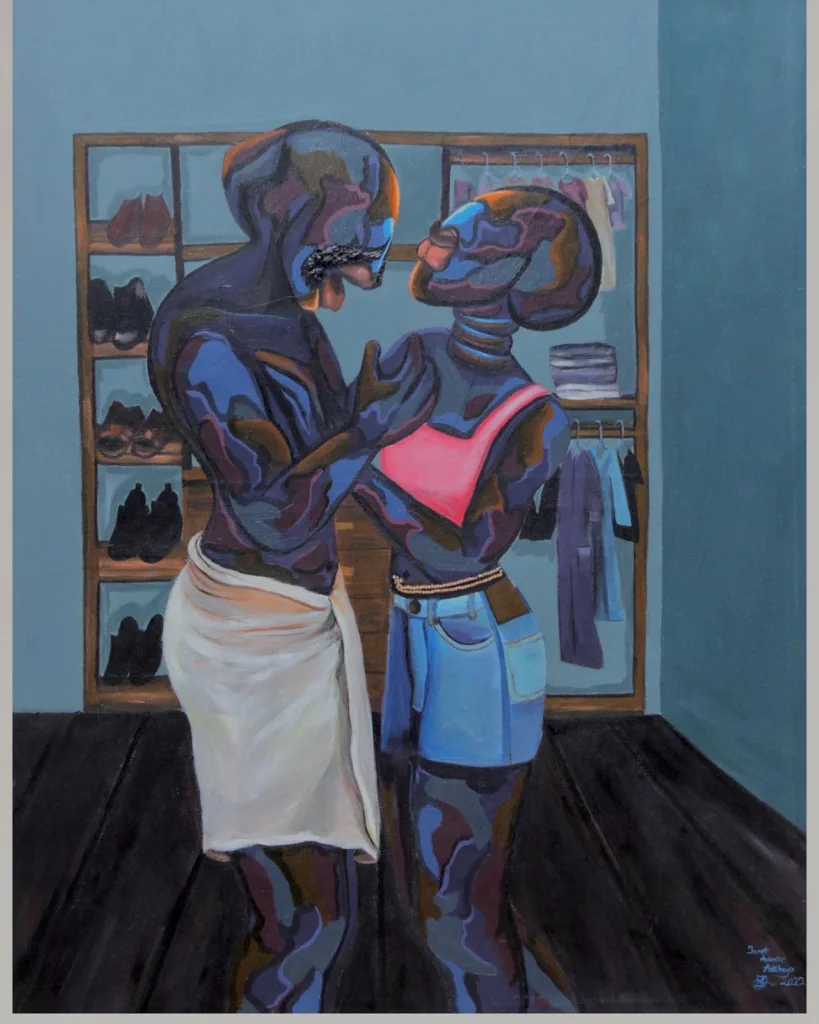
DC: You have a signature mosaic skin; is that something you developed as your style or a culmination of experiences you have gotten from interacting with various forms of art?
J.A: Both.
DC: There are elements of feminine body positivity, as seen in works such as ‘Celebrating women with small boobs.’ Is that something we should expect more in future works?
J.A: I did it when I was strongly insecure and fighting for acceptance. I’m happy I’ve gotten over it. I’ve been faced with other life challenges, and these are other aspects of my life that are now more concerning. However, if I still feel that way, I’ll tell the story because we don’t all attain 100% security. We all have complexes.



DC: Have you ever been emotionally attached to an art piece that you didn’t want to see it get sold?
J.A: Yes, I won’t lie. I guess it’s more reason I don’t have my work everywhere yet, I have a good number of works in my room. I also try to generate money elsewhere because some people do not really know why they want to keep my work. They want me to notice them. So far, women have impressed me with the attitude of purchasing my works with authentic connection. Women buy my art like drug prescriptions. Men buy it like matching outfits.

DC: If you could be compared to any artist (past or present), who would it be?
J.A: Genuinely speaking, I will not compare. This is a tricky question. I’ll just tell you the artist I like or the work of the artist I like. I like Tracey Emin.
DC: What are the three items you can’t do without as a painter?
J.A: I can’t do without music or podcasts, I can’t do without my painting materials, and I can’t do without food.
DC: What top artists or podcasts do you listen to when you paint?
J.A: The Diary Of A CEO, BBC sounds (Adeola and co) – Pressed. For songs, I really love the country vibe or any recent Afrobeats. Then I renew my interest.

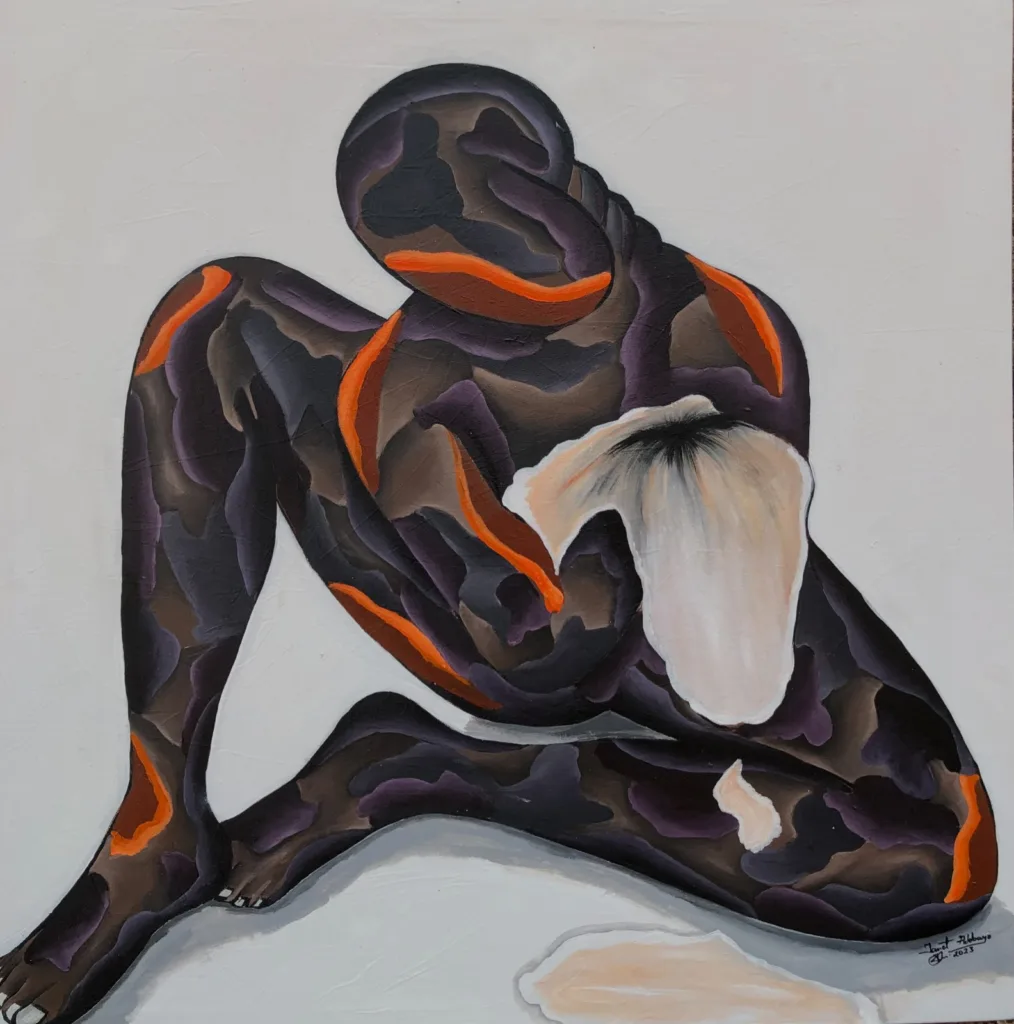
DC: What’s your dream or hope for the future as an African artist, and how do you think stakeholders in the industry can help?
J.A: To stay relevant to me because life/industry can come up with any standard. I can’t control it. As for the stakeholders, I’ll appreciate it if they experience and invest in my art, and I’ll not take any promotion/collaboration with my career for granted. But again, I can’t control their interests.
DC: Any final words for the upcoming artists or those wanting to try out their artistic passion?
J.A: Go for it. It is a jungle, you won’t come out spotless. Learn to say no. The sky is big for everyone. Don’t limit yourself, do everything you’re capable of. Step out of anything that wants to stop you from growing. Also, don’t stay under a tutor for too long. If you want to be an established artist, don’t be rude, politely leave. Again, this advice won’t work for everyone.
Find out more about Janet Adebayo on Artsy, and her Instagram for updates.


